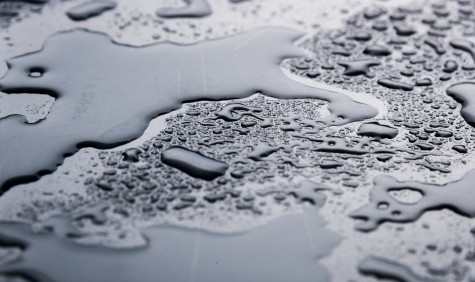"We need to properly describe the interaction between the metal surface and the molecule to get accurate results"
From methane to hydrogen
Hydrogen is a potential fuel for which unlimited quantities are available. Prof. Dr. Geert-Jan Kroes, professor of theoretical chemistry at Leiden University, investigates a crucial part in production: the dissociation of methane on metal surfaces. He was assigned 25 million core hours for this at Cartesius.
Why is methane interesting?
Geert-Jan Kroes researches dissociation of methane on metal surfaces. What exactly does that entail? "Methane is a molecule with five atoms," Kroes explains. "There are several reasons why methane is interesting. It's in natural gas, it's a greenhouse gas and you can use it to make hydrogen. The commercial way to make hydrogen is with steam reforming. You then react methane with water over a nickel catalyst; that reaction releases hydrogen. The rate in that reaction is determined by the reaction where the methane on the metal surface breaks down into a CH3 group and an H atom. In our research, we try to model that reaction as best we can with different metal surfaces."
Chemical accuracy
The research requires a substantial part of Cartesius' annual capacity. What makes the computation so complex? "We have to properly describe the interaction between the metal surface and the molecule to get accurate results," says Kroes. "A metal surface has many delocalised electrons. We need to model a large system to calculate the forces the surface exerts on the molecule. For this, we use density functional theory (DFT), which is efficient in terms of computation time but not very accurate. We want to work with so-called chemical accuracy in our calculations, which is a margin of error of at most 1 kilocalorie per mole. But with the DFT, we do not get beyond 4-5 kcal/mol. Therefore, we work semi-empirically, taking a density functional with an adjustable parameter. We then have to do calculations with which we try to fit that parameter to experiments." Another problem is that in this type of reaction you are working with a molecule that is close in mass to the surface atoms, Kroes says: "That means the molecule can transfer energy when it collides with the surface. We therefore need to use a method where we calculate the forces acting on the molecule while solving the equation of motion. So you have to calculate the forces separately for each time step."
"Cartesius, with a place in the top-50, is certainly not a bad machine. But any calculator will say: that machine needs to be much bigger."
Cartesius
What does Kroes think of Cartesius? "That's a bit of a long shot. Cartesius, with a place in the top-50, is certainly not a bad machine. But any calculator will say: that machine should be much bigger. It would be great if the Netherlands had a Tier-0 machine, like Italy. That is a bigger country though, but on the other hand we have an economy that is doing better."

